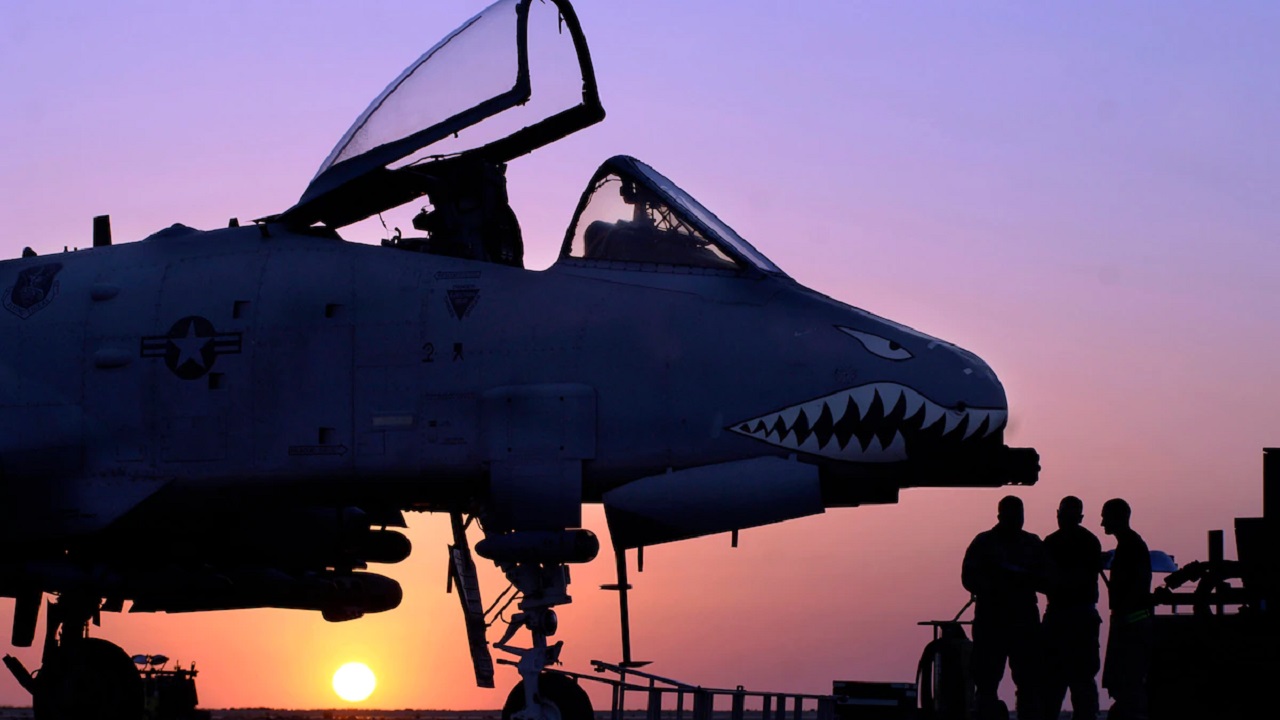One good A-10 Warthog article deserves another … and another … and yet another. This makes my zillionth 19FortyFive article on the A-10 in less than just a few months, which I reckon is symbolic of how the venerable old warbird refuses to go away quietly, in spite of the U.S. Air Force brass’s best efforts to get rid of her.
Ironically, the A-10 is one of those man-bites-dog stories wherein Congress actually likes a weapons system better than the brass does; to quote an anonymous former Iraq contracting colleague of mine who’s also a retired USAF A-10 driver, “The AF has never wanted it, or the mission, so they keep pushing to get rid of it. Politically, it had been protected by AZ Senators McCain and McSally, but now that they are no longer there, the pressure is increasing to shorten its expected lifespan.” Earlier this year, we talked about the so-called “Super Warthog” upgrades – more officially known as the A-10 Common Fleet Initiative – which are expected to fulfill the plane’s Congressional advocates’ desire to keep her viable until sometime in the 2030s.
Meanwhile, another debate about the A-10 keeps raging on: should we provide at least some of them to the Ukrainians? We shall attempt to take a fair and balanced look at that debate.
A-10s to Ukraine: The Pros
At first glance, the much-publicized vulnerabilities of – and excessive losses suffered by – Russian armor in their “special military operation” in Ukraine would seem to be ripe for the picking by prospective surplus Warthogs supplied to the Ukrainian Air Force and thus make the Russkies’ existing armor woes even worse. After all, the A-10’s track record as a tank killer is legendary.
Moreover, the aforementioned Super Warthog upgrades increase the plane’s versatility and thus give it the potential to be more than just a tank-plinker. For example, the Warthog’s capability for countering opposing air defense systems is bolstered by the addition of the GBU-39 Small Diameter Bomb (SDB), which has a range of over 60 miles and would therefore give the “war pig” (so to speak) previously unpossessed standoff attack capability. Conceivably, SDB-laden A-10s could work in tandem with UAVs to do double-duty in performing a Suppression of Enemy Air Defenses (SEAD) role.
In addition, there’s BAE’s AGR-20A Advanced Precision Kill Weapon System (APKWS), which not only “smarten” the 2.75-inch (70mm) unguided rockets but might even enable the A-10 to carry out maritime strike missions. This sort of capacity could come in handy for a concerted effort to break Russia’s Black Sea naval blockade.
It would be an additional proverbial arrow in Ukraine’s quiver. And if nothing else, even if the A-10 were to incur heavy losses from Russian air defense systems, getting shot down in a “blaze of glory” would be a nobler death than to languish and whither away slowly in the lonely Davis-Monthan AFB “Boneyard,” right?
A-10s to Ukraine: The Cons
However, upon further review, the case for sending Warthogs to Kyiv isn’t so clear-cut. As the ever-savvy Alex Hollings of Sandboxx News points out, the A-10 needs the benefit of air superiority to properly work her magic, and the Ukrainians simply don’t have that advantage yet, Russian aerial asset losses notwithstanding. As Alex elaborates:
“Russia’s air defense systems may not be as invincible as they’re often described, they’re certainly capable of engaging the supremely detectable and slow-flying Warthog … As we’ve discussed in the past, an A-10 can actually hold its own against thoroughbred fighters in a one-on-one standoff under the right circumstances, but attempting to do so is more an act of desperation than procedure. With a top speed of just 420 miles per hour, the A-10 would be an easy target for Russian S-300 or S-400 air defense systems as well as a variety of Russian fighters.”
The losses incurred by the Sukhoi Su-25 “Frogfoot” – the Soviet-designed equivalent of the Warthog – lend credence to Mr. Hollings’s assertions.
Bottom Line: the Ukrainians Themselves Don’t Want ‘Em
Us Westerners can debate the merits and demerits of the A-10’s viability ‘til we’re blue in the face, but that all becomes almost a moot point in light of the fact that the Ukrainian government itself is essentially saying “Дякую, але ні/Dyakuyu, ale ni (Thanks, but no thanks)” to the warbird. More specifically, an Air Force Magazine article published a piece not long ago quoted Yuriy Sak, adviser to Ukrainian Defense Minister Oleksii Reznikov, thusly:
“We have been requesting combat aircraft from our partners for a long time now. We need Western-standard fighter jets. We need Western-standard combat aircraft. [A-10s] are a great support machine, very durable, very deadly. And the enemy cannot hide even behind tank armor when it meets A-10s. But then, at the same time, they are slow. And, to operate them efficiently—and we know this from our pilots—they are really vulnerable to the enemy’s air defense.”
As the saying goes, “You can lead a horse to water, but you can’t make him drink.”
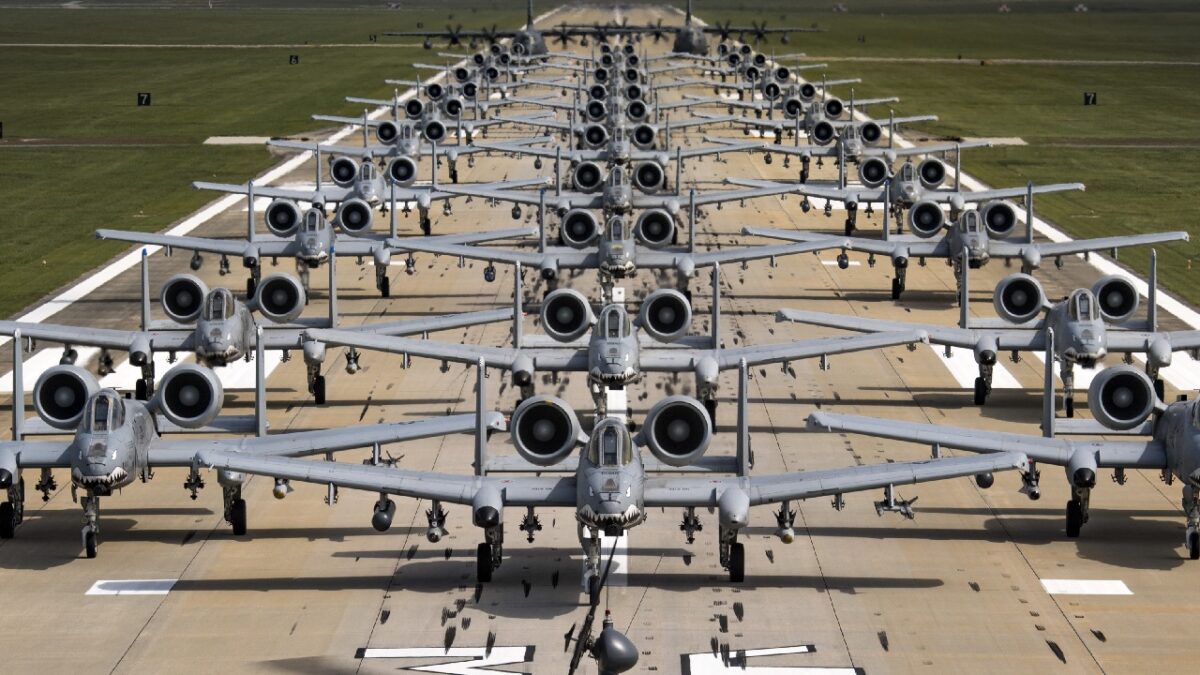
Aircraft from the 23d Wing conducted a surge exercise May 22, 2017, at Moody
Air Force Base, Ga. The exercise was conducted in order to demonstrate the
wing’s ability to rapidly deploy combat ready forces across the globe. The 23d
Wing maintains and operates A-10C Thunderbolt IIs, HH-60G Pave Hawks, and
HC-130J Combat King II aircraft for precision attack, personnel recovery and
combat support worldwide. (U.S. Air Force photo by Staff Sgt. Ryan Callaghan)
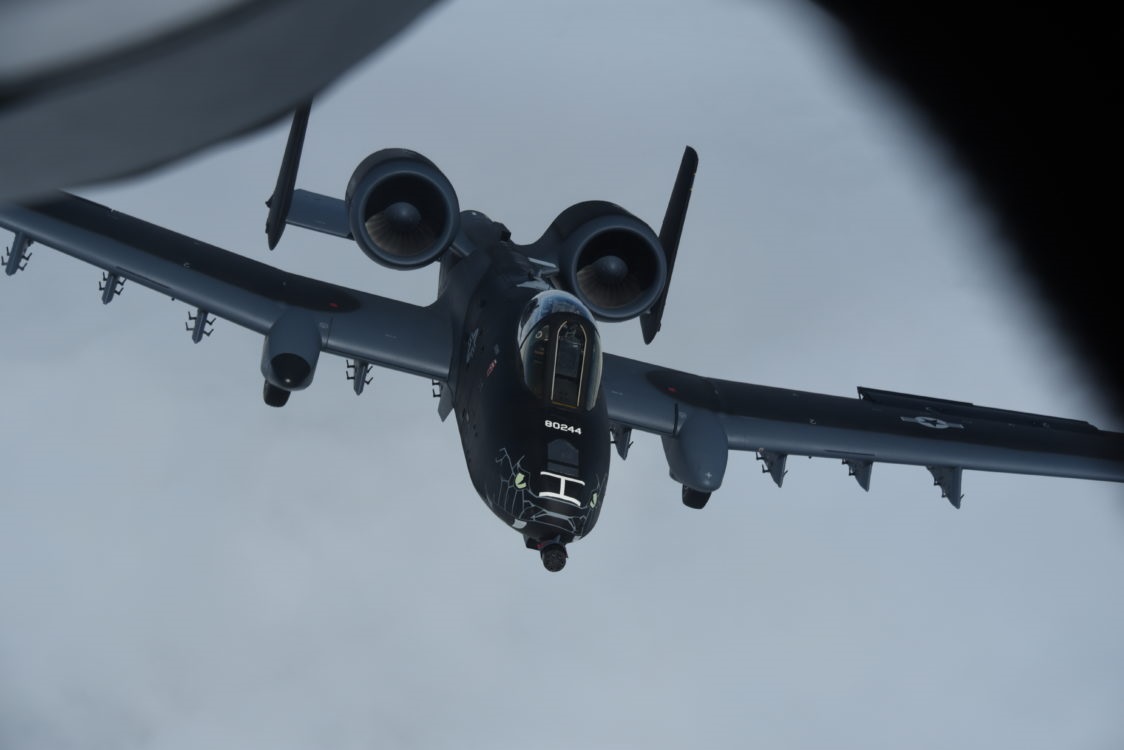
A black and grey U.S. Air Force A-10 Thunderbolt II from the Indiana Air National Guard’s 122nd Fighter Wing “Blacksnakes,” flying home on July 7, 2021. The A-10 is on its way back to Fort Wayne Ind. after being painted at the Air National Guard paint facility in Sioux City, Iowa. The paint scheme, a departure from the standard two-tone grey, was created by request in order to commemorate the 100th anniversary of aviation in the Indiana National Guard. (U.S. Air National Guard photo: Senior Master Sgt. Vincent De Groot)
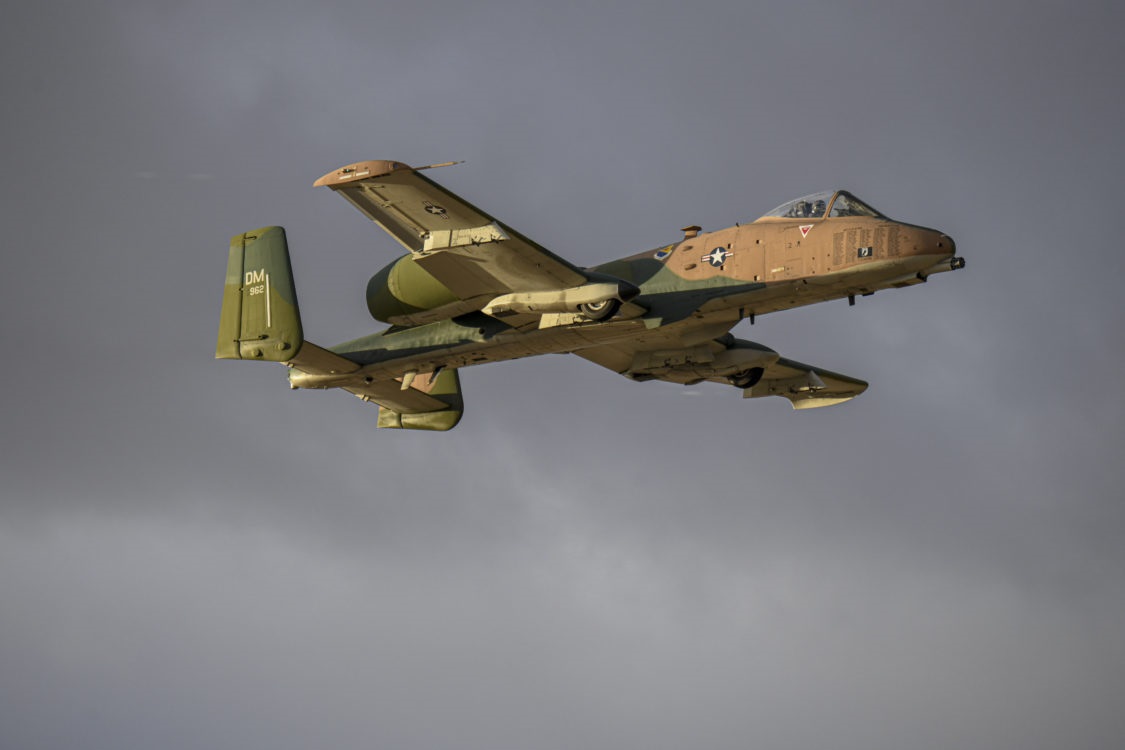
A U.S. Air Force A-10 Thunderbolt II flies over Davis-Monthan Air Force Base, Arizona, Feb. 17, 2022. The A-10 Demonstration Team’s jet has a heritage paint job to pay tribute to the 355th Tactical Fighter Wing’s contributions in the Vietnam War, including special dedication to personnel who were killed in action or became prisoners of war. (U.S. Air Force photo by Senior Airman Jacob T. Stephens)
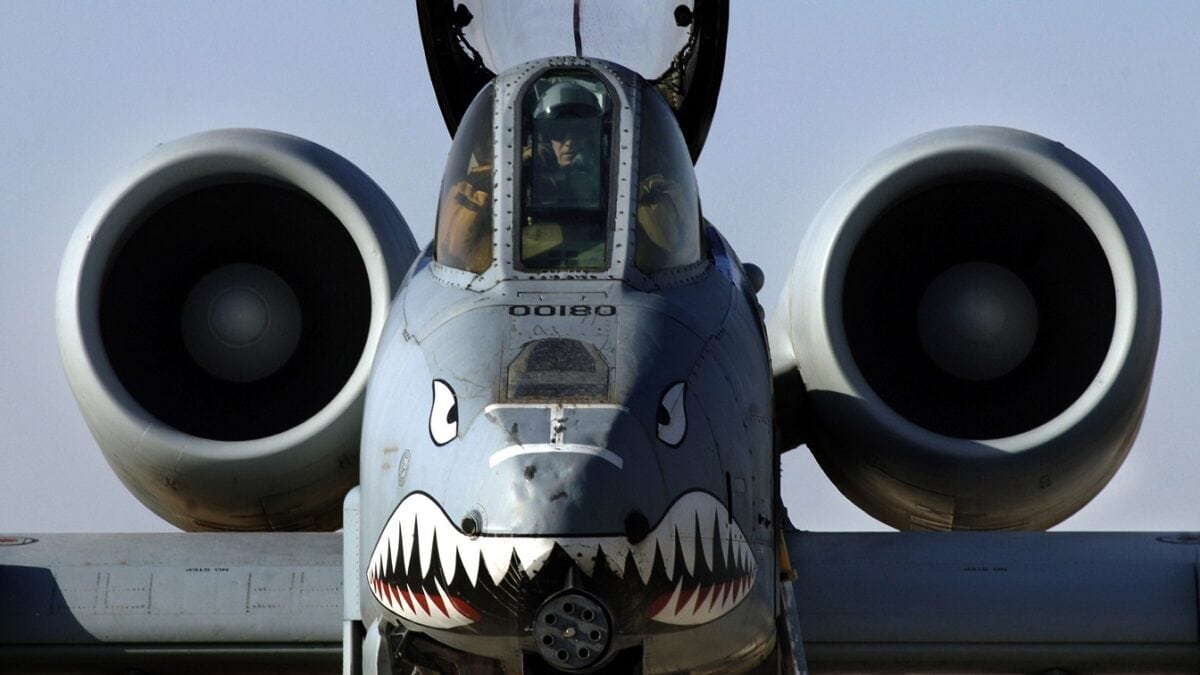
An A-10 Thunderbolt II takes off to provide close-air support to ground troops in Iraq April 25 from Al Asad Air Base, Iraq. The 438th Air Expeditionary Group A-10s perform 10 sorties daily, with 900 sorties in this last four months. (U.S. Air Force photo/Tech. Sgt. Cecilio M. Ricardo Jr.)
Christian D. Orr is a former Air Force Security Forces officer, Federal law enforcement officer, and private military contractor (with assignments worked in Iraq, the United Arab Emirates, Kosovo, Japan, Germany, and the Pentagon). Chris holds a B.A. in International Relations from the University of Southern California (USC) and an M.A. in Intelligence Studies (concentration in Terrorism Studies) from American Military University (AMU). He has also been published in The Daily Torch and The Journal of Intelligence and Cyber Security. Last but not least, he is a Companion of the Order of the Naval Order of the United States (NOUS). In his spare time, he enjoys shooting, dining out, cigars, Irish and British pubs, travel, USC Trojans college football, and Washington DC professional sports.

